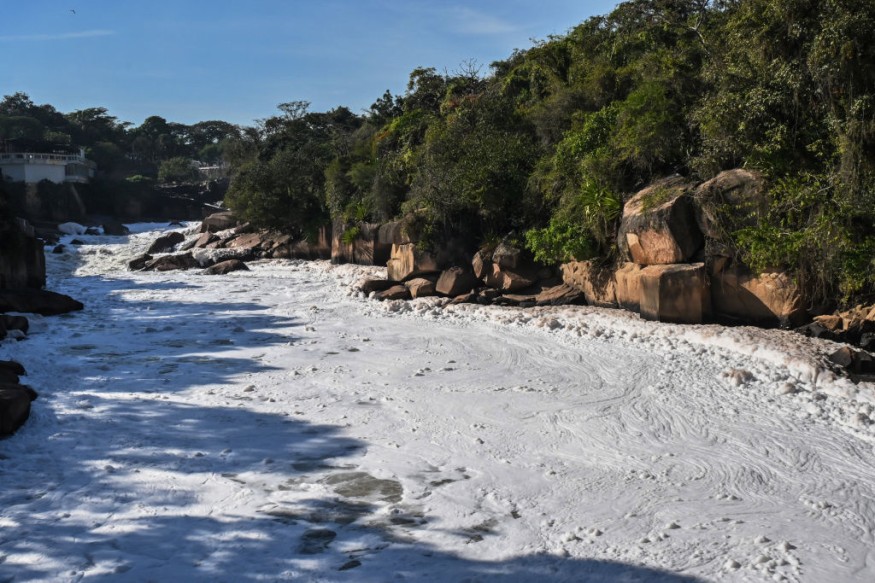
Sao Paulo's access to safe potable water is in jeopardy due to the Tiete River's recurring contamination by foul-smelling, toxic foam.
Smelly, Toxic Foam
The Tiete River near Sao Paulo, the largest city in Latin America, is covered in what appears to be fresh snow but is actually a foul-smelling, toxic foam.
The 685-mile-long Tiete River is essential for producing energy, irrigation, and drinkable water in southeast Brazil, which is the most populous region of the nation.
However, residues consisting of phosphate and phosphorus from home detergents consumed by Sao Paulo's 22 million residents and flushed down the sewers have befouled portions of the river, including one region just 62 miles from the city.
A visible foam layer has been obstructing the waterway, a tributary of the Parana River, since last week.
At one point, the coating spanned the channel for more than 10 kilometers and was also seen obstructing multiple waterfalls.
According to Malu Ribeiro from the NGO SOS Mata Atlantica, when these residues encounter the fast-moving currents of the Tiete River, it resembles the agitated action of a washing machine being switched on, resulting in a frothy chaos.
Health Implications of Recurring Phenomenon
The NGO issued a warning that contact with the foam may irritate the skin and cause sore throats as well as breathing difficulties.
According to Ribeiro, the effects on plant and animal life were probably comparable to those brought on by "acid rain."
The occurrence is not brand-new; during the dry winter months, when there is less water to break down the chemicals, the river frequently displays foam.
In several cities near the river's bank in the 1990s, conditions were periodically so terrible that foam reached the streets.
The issue has been resolved by upgrades to water treatment, but some years are still more catastrophic than others.
According to Ribeiro, the foam is worse during periods of significant temperature swings. With extremely cold mornings and extremely hot afternoons, the contrast in winter can be rather jarring.
She said that because cold water is heavier and drags harmful residues to the bottom, it forms a larger foam when it is heated by the sun, Phys Org reported.
Cleanup and Water Treatment
A construction project that will capture the sewage in the river and divert it to a treatment facility was reported by CGTN in 2019.
Observations at the time indicated that the river was ecologically dead because the fish and other marine life had long since vanished.
Phosphate and phosphorus are against use in household cleaning solutions, according to SOS Mata Atlantica.
The Foundation monitors water quality with the aid of volunteers and works to strengthen the laws that protect the rivers through projects, campaigns, and other efforts.
The resolution that permits the existence of "class 4" rivers, those that absorb contaminants that render them unavailable for various uses, such as public supply and leisure, is mostly to blame for the troubling levels of water quality and availability in the main Brazilian rivers.
Additionally, water treatment needs to be improved. According to official data from 2021, just slightly more than half of the wastewater in the Alto Tiete basin, which serves Sao Paolo, is treated.
By 2026, the water treatment network will receive 5.6 billion reais, or roughly $1.1 billion, in investments from Sao Paulo's environment ministry.
Related Article : Ohio Oil Spill After Tanker Truck Transfer Mishap Already Under Cleanup, Remedial Efforts
© 2026 NatureWorldNews.com All rights reserved. Do not reproduce without permission.





